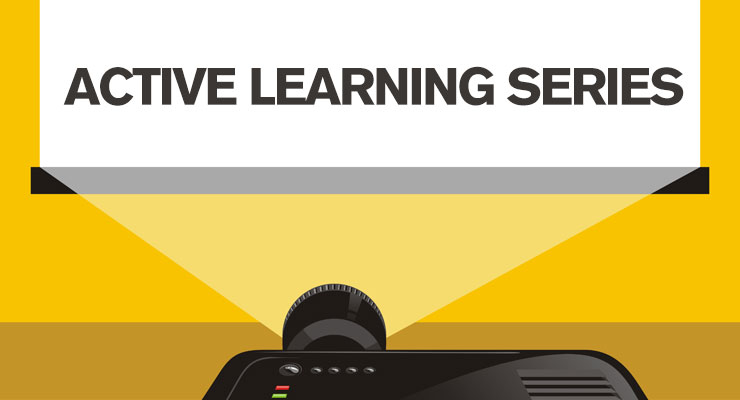Videos in the Classroom: Is That Really Active Learning?
This is the second article in a series on Active Learning. Click here to read an earlier TeachOnline blog post on how active learning promotes student success.
Videos are considered an especially effective way to present information while also addressing multiple learning styles. However, today’s students are often viewed as passive consumers of content. It is reported that a typical high school or college-age student spends, on the average, about five hours a day watching television, movies, and other online content. (Nielsen, 2013) To address this trend and encourage increased student engagement, instructors have begun to incorporate active learning strategies into face-to-face classroom and online instruction.
Whether you teach in a traditional face-to-face environment or in a strictly online or blended setting, if you decide to incorporate active learning strategies, it doesn’t mean that you must necessarily eliminate videos from your collection of instructional resources. What it does mean is that inclusion of video resources in a course should be presented within the context of an active learning strategy. In her recent Faculty Focus article, “From Passive Viewing to Active Learning: Simple Techniques for Applying Active Learning Strategies to Online Course Videos,” Emily Moore suggests utilizing one or more of the following active learning strategies to increase the effectiveness of a course video:
-
Video as part of a guided lesson.
-
Video as a springboard for in-depth course discussions.
-
Video as a springboard for critical thinking.
-
Video as a way to strengthen online research while driving conceptual understanding.
Videos are also frequently an integral component of the “flipped classroom” model of instruction. In the flipped classroom class time is devoted to active learning. Here, too, instructors need to be mindful that videos need to be paired with active learning strategies to avoid them becoming nothing more than the electronic versions of the traditional “stand and deliver” lecture. Regardless of modality, pairing videos with active learning strategies encourages students to view videos and make connections between new concepts and prior knowledge.
Do you currently use any of the active learning strategies with video to support your students’ learning? What have been your experiences using video, either in the face-to-face, hybrid, or online environment? How did you feel using video deepened students’ understanding of course subject matter?
For specific strategies to get students to watch videos, stayed tuned for the next article in our series on the Flipped Classroom.
Sources
Moore, E. A. (n.d.). Simple Techniques for Applying Active Learning Strategies to Online Course Videos | Faculty Focus. Effective Teaching Strategies for the College Classroom | Faculty Focus. Retrieved July 12, 2013, from http://www.facultyfocus.com/articles/teaching-with-technology-articles/from-passive-viewing-to-active-learning-simple-techniques-for-applying-active-learning-strategies-to-online-course-videos/
Sandercock, I. (2013, March 11). How Does Active Learning Support Student Success?. TeachOnline – Resources for Teaching Online. Retrieved July 12, 2013, from /2013/03/how-does-active-learning-support-student-success/
The Nielsen Cross-Platform Report Q3 2012 . (n.d.). Nielsen – What People Watch – What People Buy . Retrieved July 12, 2013, from http://www.nielsen.com/us/en/reports/2013/the-nielsen-march-2013-cross-platform-report–free-to-move-betwe.html



